Oil Filled Transformer Maintenance: Best Practices for Extending Operational Lifespan?
Is your oil filled transformer giving you sleepless nights? Unexpected breakdowns can cost you millions. But there’s a simple solution that many overlook.
Regular maintenance of oil filled transformers is crucial for extending their operational lifespan. Best practices include routine oil testing, proper cleaning, timely repairs, and adherence to safety protocols. These steps ensure optimal performance, prevent unexpected failures, and save costs in the long run.
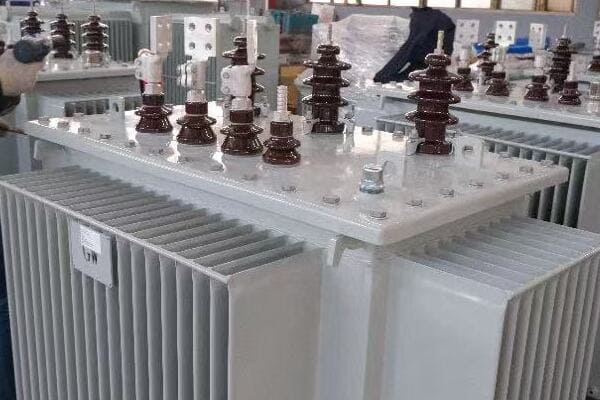
In this article, I’ll share my experience and insights on maintaining oil filled transformers. From understanding the importance of transformer oil to spotting early warning signs, we’ll cover everything you need to know to keep your electrical system running smoothly.
Transformer Oil 101: Why It’s the Lifeblood of Your Electrical System?
Have you ever wondered why transformers are filled with oil? It’s not just to make maintenance messy. This liquid plays a crucial role in your transformer’s health and longevity.
Transformer oil serves as both an insulator and coolant, crucial for the efficient operation of the transformer. It prevents electrical discharges, dissipates heat, and protects internal components from corrosion. Regular oil maintenance is essential for transformer health and longevity.
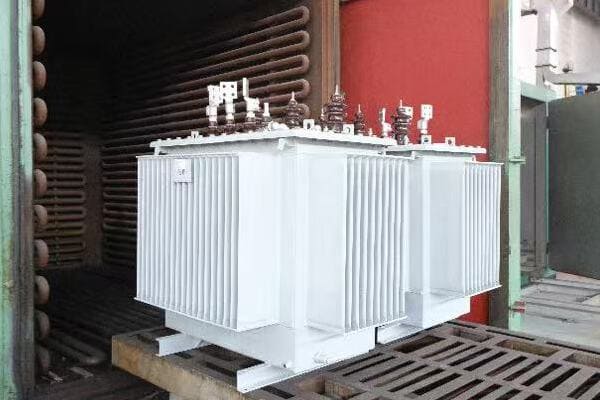
Let’s dive deeper into the world of transformer oil:
Insulation: The Invisible Barrier
Transformer oil acts as a powerful insulator, preventing electrical breakdowns.
Key Points:
- High dielectric strength
- Fills gaps between components
- Prevents arcing and short circuits
Cooling: Keeping Things Chill
The oil’s ability to dissipate heat is crucial for transformer efficiency.
Benefits:
- Absorbs heat from windings and core
- Circulates to transfer heat to radiators
- Extends the life of internal components
Protection: The Silent Guardian
Beyond insulation and cooling, oil protects the transformer’s internals.
Protective Functions:
- Prevents oxidation of metal parts
- Absorbs moisture to prevent rust
- Indicates transformer health through analysis
| Oil Function | Importance | Maintenance Need |
|---|---|---|
| Insulation | Critical | Regular dielectric strength tests |
| Cooling | High | Monitoring oil temperature and level |
| Protection | Medium | Periodic oil quality checks |
I remember a project where we were called in to investigate frequent failures in a power distribution network. The culprit? Neglected transformer oil maintenance. The utility company had been skipping regular oil checks to cut costs. This short-sighted approach led to multiple transformer failures, causing widespread outages and costing millions in repairs and lost revenue.
We started by analyzing oil samples from all the transformers in the network. The results were eye-opening. Many units showed dangerously low dielectric strength, indicating the oil’s insulating properties were compromised. Some samples contained high levels of dissolved gases, a telltale sign of internal arcing.
One transformer, in particular, stands out in my memory. Its oil had turned a dark brown color and had a distinct burnt smell. When we opened it up, we found severe coking on the windings – a clear sign of overheating. The oil had degraded to the point where it could no longer effectively cool the transformer. If left unchecked, this would have led to a catastrophic failure.
We implemented a comprehensive oil maintenance program for the utility. This included regular oil sampling and testing, filtration to remove contaminants, and in some cases, complete oil replacement. We also installed online monitoring systems on critical transformers to continuously track oil temperature and gas levels.
The results were dramatic. Within a year, transformer failures dropped by 80%. The utility saw significant savings in maintenance costs and a marked improvement in network reliability. More importantly, they avoided potential disasters that could have resulted from catastrophic transformer failures.
This experience taught me the vital importance of transformer oil maintenance. It’s not just about changing oil periodically; it’s about understanding the oil’s role and monitoring its condition regularly. Transformer oil truly is the lifeblood of the electrical system, and treating it as such is key to ensuring the longevity and reliability of your transformers.
Keep It Clean, Keep It Running: Simple Steps for Transformer Maintenance?
Is your transformer maintenance routine more of a "fix it when it breaks" approach? You might be sitting on a ticking time bomb. But don’t worry, I’ve got some simple steps that can save you from disaster.
Simple steps for transformer maintenance include regular oil testing, visual inspections, cleaning of cooling systems, and monitoring of key parameters. These routine tasks can prevent major issues, extend transformer life, and ensure reliable operation of your electrical system.
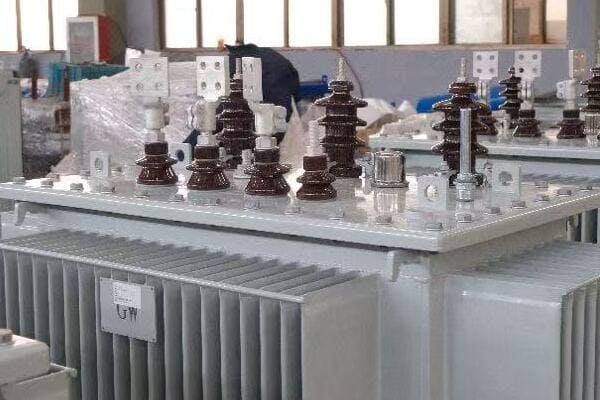
Let’s break down these simple yet effective maintenance steps:
Regular Oil Testing: The Health Check-Up
Think of oil testing as a blood test for your transformer.
Key Tests:
- Dielectric strength test
- Dissolved gas analysis (DGA)
- Acidity and moisture content check
Visual Inspections: The Power of Observation
Never underestimate what your eyes can tell you about your transformer’s health.
Inspection Points:
- Oil leaks
- Rust or corrosion
- Unusual noises or vibrations
Cleaning Cooling Systems: Keep It Cool
A clean cooling system is crucial for efficient transformer operation.
Cleaning Tasks:
- Remove debris from radiator fins
- Clean fan blades and motors
- Check and clean oil pumps
Monitoring Key Parameters: Stay Informed
Keeping an eye on vital signs can prevent surprises.
Parameters to Monitor:
- Oil and winding temperatures
- Load current
- Dissolved gas levels
| Maintenance Task | Frequency | Benefit |
|---|---|---|
| Oil Testing | Quarterly | Early fault detection |
| Visual Inspection | Monthly | Catch external issues early |
| Cooling System Cleaning | Bi-annually | Maintain cooling efficiency |
| Parameter Monitoring | Continuous | Real-time health tracking |
I once worked with a manufacturing plant that had a critical transformer powering their main production line. They had been neglecting routine maintenance due to the hassle of production downtime. One day, during peak production, the transformer failed catastrophically, causing a fire and shutting down the entire plant for weeks.
When we investigated, we found that simple maintenance steps could have prevented this disaster. The oil hadn’t been tested in years, and it showed signs of severe degradation. The cooling fans were clogged with dust and debris, causing the transformer to overheat regularly. There were visible oil leaks that had been ignored, leading to low oil levels and poor insulation.
We implemented a comprehensive maintenance program for the plant. We started with a thorough cleaning of all transformers, paying special attention to the cooling systems. We instituted a quarterly oil testing schedule and trained the plant’s maintenance team on how to perform basic visual inspections.
One of the most effective changes was the installation of an online monitoring system. This allowed the plant managers to keep an eye on key parameters like oil temperature and dissolved gas levels in real-time. We set up alerts to notify them of any concerning trends before they became critical issues.
The results were impressive. In the first year after implementing these maintenance steps, the plant saw zero unplanned transformer-related outages. Energy efficiency improved as the transformers were operating at optimal temperatures. The plant managers were particularly pleased with the cost savings – the expense of routine maintenance was far less than the losses they had incurred from the previous failure.
This experience reinforced my belief in the power of simple, consistent maintenance. It’s not about complex procedures or expensive equipment. Often, it’s the basic steps, done regularly and diligently, that make the biggest difference in transformer health and longevity.
Remember, in transformer maintenance, an ounce of prevention is worth a pound of cure. By following these simple steps, you can keep your transformers running smoothly, avoid costly failures, and ensure the reliability of your electrical system.
Warning Signs: How to Spot Trouble in Your Oil Filled Transformer Early?
Have you ever been caught off guard by a sudden transformer failure? It’s like a heart attack in your electrical system – unexpected and potentially catastrophic. But what if you could spot the warning signs early?
Early warning signs in oil filled transformers include unusual noises, oil leaks, discoloration of oil, increased operating temperatures, and changes in electrical parameters. Recognizing these signs allows for timely intervention, preventing major failures and extending the transformer’s operational life.
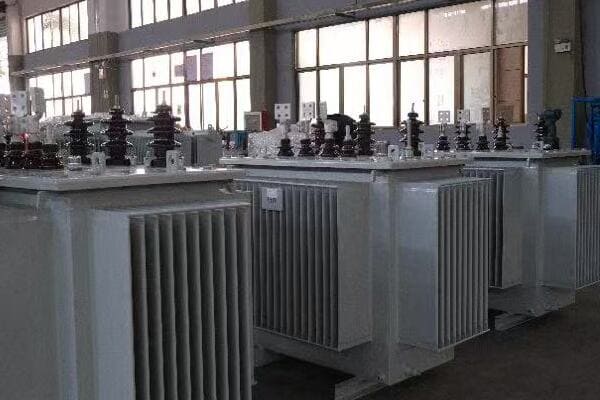
Let’s explore these warning signs in detail:
Unusual Noises: Listen to Your Transformer
A healthy transformer hums quietly. Any change in this sound is a red flag.
What to Listen For:
- Loud buzzing or humming
- Crackling or popping sounds
- Sudden changes in noise level
Oil Leaks: The Visible Threat
Oil leaks are not just messy; they’re a serious warning sign.
Where to Look:
- Around gaskets and seals
- At the base of the transformer
- On cooling fins and radiators
Oil Discoloration: A Window to Internal Health
The color of transformer oil can tell you a lot about its condition.
Color Indicators:
- Clear or pale yellow: Good condition
- Dark yellow or brown: Aging oil
- Black or dark brown: Severe degradation
Increased Operating Temperatures: Feeling the Heat
Abnormal temperature rises can indicate underlying problems.
Temperature Checks:
- Monitor oil temperature gauges
- Use infrared cameras for hotspot detection
- Check for unusual heat patterns
Changes in Electrical Parameters: The Invisible Signs
Electrical measurements can reveal problems before they become visible.
Parameters to Monitor:
- Insulation resistance
- Power factor
- Partial discharge levels
| Warning Sign | Potential Cause | Recommended Action |
|---|---|---|
| Unusual Noises | Loose windings, arcing | Immediate inspection |
| Oil Leaks | Gasket failure, cracks | Repair and oil top-up |
| Oil Discoloration | Oil degradation, contamination | Oil testing and possible replacement |
| High Temperatures | Overloading, cooling system failure | Load review, cooling system check |
| Electrical Parameter Changes | Insulation breakdown, winding issues | Detailed electrical testing |
I recall a particularly memorable incident at a power substation. The operators had been ignoring a slight increase in the humming noise from one of their main transformers. They assumed it was normal aging. One day, during a routine inspection, I noticed the noise had become more pronounced. It wasn’t just louder; there was a distinct crackling sound intermixed with the hum.
Trusting my instincts, I recommended an immediate shutdown and internal inspection. What we found was alarming. The increased noise was due to severe arcing between windings. The insulation had degraded, and we were just hours away from a catastrophic failure that could have taken out the entire substation.
This experience taught me the importance of paying attention to even subtle changes in transformer sounds. Now, whenever I train maintenance teams, I emphasize the need to use all their senses during inspections, not just sight.
Another case that stands out involved a transformer that showed no obvious external signs of trouble. However, during a routine oil test, we noticed a significant change in the oil’s color – it had darkened considerably since the last test. Further analysis revealed high levels of dissolved gases, indicating internal partial discharges.
We used an infrared camera to check for hotspots and found an area of the transformer running much hotter than the rest. This combination of warning signs led us to perform a more detailed investigation, which uncovered a developing fault in one of the windings.
By catching this issue early, we were able to plan a controlled outage for repairs, rather than dealing with an unexpected failure. This proactive approach saved the utility company millions in potential damages and lost revenue.
These experiences have shown me that transformer problems rarely appear out of nowhere. There are almost always warning signs – if you know what to look for. By training yourself and your team to recognize these early indicators, you can catch issues before they escalate into major problems.
Remember, your transformer is constantly communicating its condition to you. The key is learning to understand its language. By paying attention to these warning signs and acting on them promptly, you can significantly extend the life of your transformer and avoid costly, unexpected failures.
Safety First: A Beginner’s Guide to Transformer Maintenance Precautions?
Are you new to transformer maintenance? It’s crucial work, but it can be dangerous if you’re not careful. Don’t worry, though – I’ve got your back with some essential safety tips.
Safety in transformer maintenance involves proper lockout/tagout procedures, use of personal protective equipment (PPE), awareness of electrical hazards, and adherence to safety protocols. These precautions protect workers from electrical shocks, burns, and other potential injuries during maintenance activities.
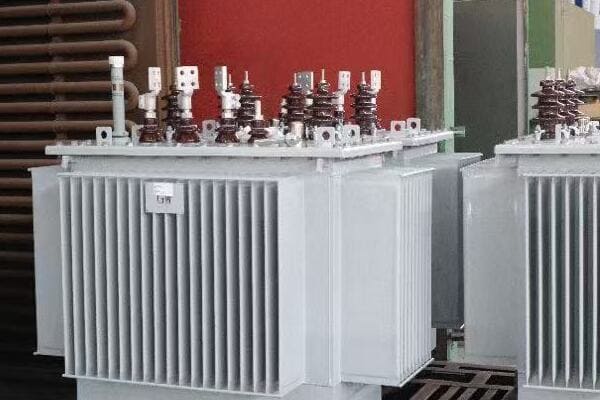
Let’s break down the key safety precautions:
Lockout/Tagout: The First Line of Defense
Never start work without ensuring the transformer is de-energized and locked out.
Key Steps:
- Disconnect all power sources
- Apply locks to disconnect points
- Use clear, visible tags
Personal Protective Equipment (PPE): Your Safety Armor
Proper PPE is non-negotiable when working with transformers.
Essential PPE:
- Insulated gloves and boots
- Arc-flash rated clothing
- Safety glasses and face shields
Electrical Hazard Awareness: Knowledge is Power
Understanding potential dangers is crucial for avoiding them.
Key Hazards:
- Residual charge in capacitors
- Induced voltage in nearby equipment
- Arc flash and blast risks
Safety Protocols: Following the Rules
Adhering to established safety procedures saves lives.
Important Protocols:
- Work permit systems
- Two-person rule for high-risk tasks
- Emergency response plans
| Safety Aspect | Purpose | Implementation |
|---|---|---|
| Lockout/Tagout | Prevent accidental energization | Before any maintenance work |
| PPE | Protect against electrical and physical hazards | Wear at all times in work area |
| Hazard Awareness | Identify and mitigate risks | Regular safety training |
| Safety Protocols | Ensure consistent safe practices | Strict adherence to procedures |
I’ll never forget my first day on a transformer maintenance job. I was eager to prove myself and almost made a rookie mistake that could have been fatal. I was about to open a transformer cabinet when my supervisor stopped me. I had forgotten to check if the transformer was fully de-energized and locked out.
That day, he walked me through the proper lockout/tagout procedure step by step. We disconnected the power, applied locks, and placed clear tags indicating maintenance was in progress. He emphasized that this procedure wasn’t just a formality – it was a life-saving practice.
Another crucial lesson came when working on a large substation transformer. Before we started, my team lead insisted we all put on our full PPE, including arc-flash rated suits. Some of the newer team members grumbled about the discomfort, but he was adamant.
During the maintenance, a small error led to an arc flash. Thanks to our PPE, no one was injured. This incident drove home the importance of always wearing proper protective equipment, no matter how routine the task might seem.
Electrical hazard awareness is something I continuously stress in my training sessions. I once witnessed a near-miss where a technician almost contacted a nearby energized bus bar while working on a de-energized transformer. He had forgotten about the risk of induced voltage in adjacent equipment. This incident led us to implement a policy of identifying and marking all potential hazard points before starting work.
Safety protocols might seem tedious, but they’re essential. I recall a situation where following the two-person rule for high-risk tasks prevented a serious accident. My colleague spotted a potential issue that I had missed, stopping work just in time to prevent a dangerous situation.
Over the years, I’ve learned that safety in transformer maintenance isn’t just about rules and equipment. It’s about creating a culture where safety is everyone’s responsibility. I encourage all team members to speak up if they see something unsafe, no matter their position.
One practice I’ve found particularly effective is conducting pre-job safety briefings. Before each maintenance task, we gather the team to discuss the specific hazards of the job and review safety procedures. This not only refreshes everyone’s knowledge but also allows for questions and clarifications.
Remember, in transformer maintenance, there’s no such thing as being too careful. The few extra minutes it takes to follow safety procedures can be the difference between a routine job and a life-altering accident. By prioritizing safety and following these precautions, you can ensure that you and your team go home safely at the end of each day.
Extend Your Transformer’s Life: Easy Maintenance Tips Anyone Can Follow?
Worried about the lifespan of your transformer? You’re not alone. Many think transformer maintenance is complex and costly, but it doesn’t have to be. I’ve got some easy tips that can make a big difference.
Extending a transformer’s life involves simple yet effective maintenance practices. These include regular oil checks, keeping the transformer clean, monitoring temperatures, and performing routine inspections. By following these easy tips, you can significantly increase your transformer’s lifespan and reliability.
Let’s explore these easy maintenance tips in detail:
Regular Oil Checks: The Simple Health Test
Checking your transformer’s oil is like getting a regular blood test for your electrical system.
Easy Oil Check Steps:
- Visual inspection for color and clarity
- Check oil levels monthly
- Annual oil sample testing
Keep It Clean: A Little Effort Goes a Long Way
A clean transformer is a happy transformer. Regular cleaning prevents many issues.
Cleaning Tips:
- Remove dust and debris from radiators
- Clean bushings and insulators
- Check for and clean up any oil leaks
Temperature Monitoring: Stay Cool Under Pressure
Keeping an eye on temperatures can prevent overheating and extend transformer life.
Temperature Checks:
- Monitor oil temperature gauges regularly
- Use infrared cameras for hotspot detection
- Ensure cooling fans are working properly
Routine Inspections: The Power of Observation
Regular visual inspections can catch problems before they become serious.
Inspection Checklist:
- Look for signs of rust or corrosion
- Check for unusual noises or vibrations
- Inspect gaskets and seals for leaks
| Maintenance Tip | Frequency | Benefit |
|---|---|---|
| Oil Checks | Monthly/Annually | Early detection of oil degradation |
| Cleaning | Quarterly | Improved cooling efficiency |
| Temperature Monitoring | Weekly | Prevent overheating damage |
| Routine Inspections | Monthly | Catch minor issues early |
I remember working with a small manufacturing plant that was struggling with frequent transformer issues. They thought maintenance was too complex and expensive, so they often neglected it. I introduced them to these simple maintenance tips, and the results were remarkable.
We started with regular oil checks. I showed them how to visually inspect the oil for color changes and check the levels. They were surprised at how easy it was. We set up a schedule for annual oil testing, which they could do without shutting down production.
Cleaning was another area where we made significant improvements. I demonstrated how to safely clean the radiators and bushings. The plant manager was amazed at how much dust had accumulated on their transformers. After implementing regular cleaning, they noticed improved cooling efficiency and fewer temperature alarms.
Temperature monitoring was a game-changer for them. We installed simple temperature gauges that the operators could check during their rounds. I also trained them to use a basic infrared camera to spot potential hotspots. This early warning system helped them catch and address several overheating issues before they caused any damage.
The routine inspection checklist was perhaps the most impactful change. We created a simple form that any operator could fill out during their shift. This included checking for unusual noises, visible leaks, or signs of corrosion. Within the first month, they caught a small oil leak that could have led to a major failure if left unchecked.
One particular success story stands out. The plant had an old transformer that they were considering replacing due to poor performance. After implementing these maintenance tips for just six months, they saw a significant improvement in its operation. The transformer’s efficiency increased, and it ran cooler. They ended up extending its life by several years, saving a substantial amount on replacement costs.
The key lesson here is that transformer maintenance doesn’t have to be complicated or expensive. Simple, consistent care can make a huge difference. I always tell my clients that it’s better to spend a little time and effort on regular maintenance than to face the high costs and downtime of unexpected failures.
Remember, you don’t need to be an expert to take good care of your transformer. By following these easy tips, anyone can contribute to extending their transformer’s life. It’s about creating a culture of proactive care, where everyone understands the importance of these simple maintenance tasks.
In my experience, the transformers that last the longest are not necessarily the newest or most expensive ones. They’re the ones that receive consistent, attentive care. By implementing these easy maintenance tips, you’re not just extending your transformer’s life; you’re ensuring the reliability and efficiency of your entire electrical system.
Conclusion
Proper maintenance of oil filled transformers is crucial for extending their operational lifespan. By understanding the importance of transformer oil, following simple maintenance steps, recognizing warning signs, prioritizing safety, and implementing easy care tips, you can significantly enhance the reliability and longevity of your electrical system.
Free CHBEB Transformer Catalog Download
Get the full range of CHBEB transformers in one catalog.
Includes oil-immersed, dry-type, pad-mounted, and custom solutions.
Quick Message
Request A free quote
We'd like to work with you
- +86 15558785111
- [email protected]
- +86 15558785111
What We Do
CHINA BEI ER BIAN (CHBEB) GROUP, with 218 million in registered capital, originated from Beijing Beierbian Transformer Group. Headquartered in Beijing for R&D, it operates major production bases in Nanjing and Yueqing, producing high-quality products.
Latest Product
address
BeiJing
No 3,RongJing East Road,BeiJing Economic Technological Development Area,BeiJing,China
JiangSu
No 7️Xiangfeng Road,Jiangning,NanJing,JiangSu,China
WenZhou
No.211, Wei 16 Road, Industrial Zone, Yueqing, Wenzhou, Zhejiang, China.
XiangYang Industrial Zone ,YueQing,WenZhou,ZheJiang,China
contact us
- [email protected]
- +86 13057780111
- +86 13057780111
- +86 15558785111
Copyright © Bei Er Bian Group


